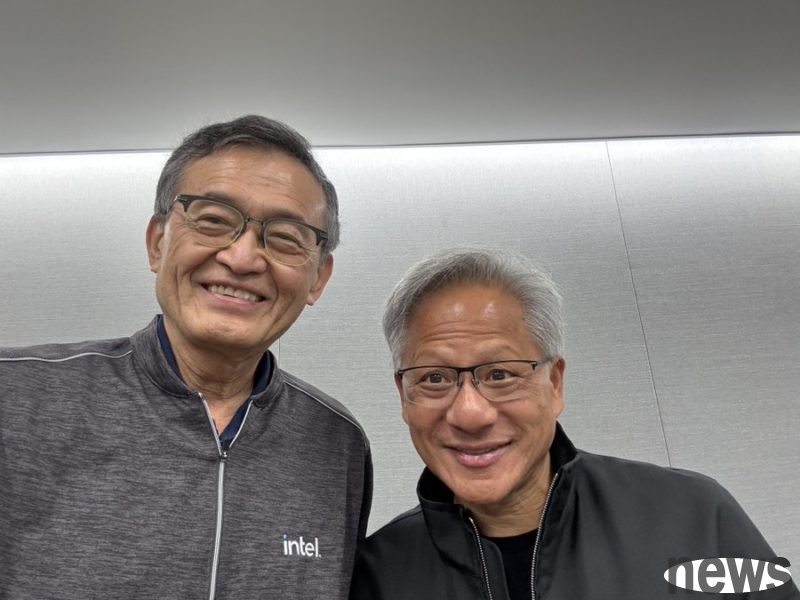
, once the arrogant king of semiconductors, and NVIDIA, the overlord who is the only leader in the AI field, announced that it will cooperate to develop chips. What impact will Chen Liwu and Huang Rensha bring to other AI competitors and Taiwan semiconductors?
This is already the third huge investment found by the company by the Intel executive chairman Chen Liwu, who was already a creative investment in the company in half a year.
In the early morning of September 19, Taipei time, Chen Liwu and NVIDIA (NVIDIA) executive chief Huang Rensheng jointly held an online reporter meeting, verifying that NVIDIA decided to invest US$5 billion and obtained about 4% of Intel's shares. This is the old-day semi-conductor king that has been stormy in August has once again attracted important strategic investors.
"Intel is rebuilding a culture that focuses on engineering technology. At this moment, we are very excited to carry out engineering cooperation on x86 and GPU." At the reporter's meeting, Chen Liwu defined the relationship between the two parties in this way. On the other side of the picture, Huang Renshi, who was rarely worn in a suit, said: "I think the footprint of the x86 architecture is still very huge. The world's largest customers still use x86 architecture in AI-based facilities." From the comments of the two, we can know that the core purpose of NVIDIA's investment in Intel is to include Intel's x86 processor in its own products.
The x86 architecture developed by Intel in 1978 is still the mainstream technology of central processor (CPU) for computer and data centers. According to research reports from the research agency IDC, x86 architecture processors will lead the data center market in the next five years, with estimated server spending accounting for about 71% in 2029, which is far higher than 26% of Arm (Administrative) architecture processors.
In the future, Intel will tailor-made custom x86 architecture CPUs for NVIDIA's AI-based facilities. These processors will be able to effectively cooperate with NVIDIA's GPUs, improve the overall computing efficiency of NVIDIA products, and help NVIDIA continue to expand its existing leading advantages. The meaning of this cooperation for Intel is to officially enter the AI data center ecosystem led by NVIDIA.
At the Joint Journalists Association, Chen Liwu expressed his intention to send his own CPU and NVIDIA GPU as a stack, but he never mentioned Intel's artificial intelligence chip Gaudi, developed by himself in the past few years, and a series of GPU products, which made the market inevitably wonder whether Intel has decided to give up AI chips and rely on NVIDIA's operations.
In this regard, Digitimes analyst Yao Jiayang explained that Intel has been investing in the research and development of the GPU field for five years, but has not achieved any significant results. With Intel's operations against the trend, Chen Liwu will inevitably think about the question of "who is more important, GPU or CPU, and make rational decisions on resource configuration.
However, Intel's strategy of "joining NVIDIA if you can't win" in the AI field is not completely risk-free.
Extended reading: Invest in OpenAI and support Intel: NVIDIA is already a "computing power bank" with a market value of US$4.5 trillion NVIDIA has won $10 billion, and has jointly built 10 GW AI basic facilities with OpenAI Why does NVIDIA join forces with Sudden Intel? Is it a threat to Taiwan power? A post to understand the Semi-Conductor Century Alliance NVIDIA and Intel cooperate to strengthen the principle of addition and do not change the original plan, and the cooperation with NTU will continue. Spend USD 5 billion to invest in Intel! It is not about crystal OEM, what does NVIDIA want?